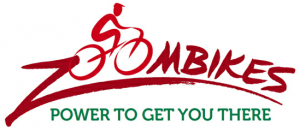Category Archives: Small Business Advertising
Local Online Advertising to Grow 31%
Borrell Associates has released its 2013 Local Advertising Outlook report. There’s a lot in the document. However for the purposes of this post the headline is: Local online advertising projected to grow 31% from $18.7 billion in 2012 to $24.5 billion in 2013.


Word-of-Mouth primary driver of local business
#VT – Need a recommendation for a plumber? Best burrito in town? Slate roof repair? People turn to Front Porch Forum again and again in our coverage area. Now a new study offers some insight (below). People use FPF to get a recommendation from a neighbor, to read reviews in the archives, and to see the ads from our local sponsors. FPF is word-of-mouth accelerator for local businesses.
A new Street Fight poll finds that even with a slew of new locally targeted marketing platforms at local merchants’ disposal, word-of-mouth is still a primary driver of local consumer behavior.
The poll of 500 U.S. consumers found that 43% of consumers are most likely to shop or dine at a local business after a recommendation from a friend or colleague. 30% are primarily motivated by daily deals, 15% after seeing a locally or behaviorally targeted advertisement, and 12% after reading a positive review about the merchant online. The poll was conducted on behalf of Street Fight by third-party opinions platform Toluna QuickSurveys.
Are you more likely to shop at a local business after…
Tumblr runs counter to web convention
![]() #VT – Folks are sharing yesterday’s NYTimes’ piece about Tumblr… “reminds me of Front Porch Forum.” Well… we’re flattered!
#VT – Folks are sharing yesterday’s NYTimes’ piece about Tumblr… “reminds me of Front Porch Forum.” Well… we’re flattered!
Of course, Tumblr and FPF operate at different scales and offer different products. Tumblr has been used to create 60 million blogs globally. We host 100 neighborhood/small town FPFs in Vermont… and about 40,000 households participate (out of our 110,000-household coverage area).
Some bits from the New York Times Magazine article by Rob Walker…
The design of Tumblr, the blogging tool and social network, is guided by feeling. In particular, the feelings of David Karp, the company’s 26-year-old founder, whose instincts tend to run counter to current Web conventions. Tumblr does not display “follower” counts, for example, or other numerical markers of popularity that are viewed as crucial social-media features, because Karp finds them “really gross.” The culture of public friend-and-follow reciprocity that theoretically expands a social networking service can, in his view, “really poison a whole community.”
Possibly such a view of Internet culture could be arrived at by way of deliberate study of online group behavior. But that’s not how Tumblr was made. “David built it for himself,” John Maloney, until recently the company’s president, told me…
The trick is making page views equal money. “Pretty much every large tech company today,” Karp said, is essentially “metrics driven.” Google, Twitter, Facebook: they’re obsessed with “optimizing” services, design, functionality and aesthetics through constant testing and tweaking. That ability to optimize and (not incidentally) monetize user experiences by reacting to microlevel data is the essence of Web-business magic, as it is generally understood.
Karp chose not to operate that way. Rather than monetizing clicks, he wants advertisers to view Tumblr as a place to promote particularly creative campaigns to an audience whose attention is worth paying for…
The features Tumblr eliminates are as important to the way it feels as those it adopts. Bijan Sabet of Spark Capital, an early Tumblr investor who sits on its board, says that it is “normal behavior” for a founder to be excited about adding new bells and whistles, but Karp seems excited about doing the opposite: “He’ll tell us, “˜Hey, got a new version coming up and I took four features out!’ “…
Karp’s thinking about the comments section, which is generally assumed to be a core blog feature, helps illustrate his broader ideas about how design shapes behavior online. Typically, a YouTube video or blog post or article on a newspaper’s site is the dominant object, with comments strewed below it, buried like so much garbage. Thus many commenters feel they must scream to be noticed, and do so in all caps, profanely and with maximum hyperbole. This, Karp argues, brings out the worst in people, so Tumblr’s design does not include a comments section.
How, then, to encourage feedback while discouraging drive-by hecklers who make you never want to post again? First, Karp notes, you can comment on someone else’s post, by reblogging it and adding your reaction. But that reaction appears on your Tumblr, not the one you’re commenting on. “So if you’re going to be a jerk, you’re looking like a jerk in your own space, and my space is still pristine,” Karp explains. This makes for a thoughtful network and encourages expression and, ultimately, creativity. “That’s how you can design to make a community more positive.”
Emergent Media for Social Entrepreneurs and Nonprofits in Waitsfield #VT July 12
New/Digital Emergent Media for Social Entrepreneurism and Nonprofits
HigherMind Mediaworks to host free July NetsquaredVermont Event
@ Quench ArtSpace in Waitsfield on Thursday, July 12 from 7:00 – 9:00 pm
Curious about Front Porch Forum? Yakking on YouTube? Friending on Facebook? Tweeting on Twitter? All Mad River Valley residents interested in new digital media platforms and how they can be harnessed for effective social entrepreneurism and nonprofit work are invited to a FREE public forum bringing together some of Vermont’s most forward-thinking nonprofit leaders and social entrepreneurs using new/digital emergent media for positive social change.
Our July 12 @Netsquared guest panelist presenters include:
• Lauren Glenn-Davitian and Eli Harrington, who spearheads CommonGoodVT, a Burlington-based organization dedicated to supporting the Vermont nonprofit community. Connect @ www.commongoodvt.org.
• Michael Wood-Lewis, the co-founder of Front Porch Forum, a free community-building service helping neighbors connect, now being used in dozens of towns around Vermont. Network @ frontporchforum.com.
• Sandy Tarburton, Membership and Communications Director for the Northern Forest Canoe Trail. Paddle @ www.northernforestcanoetrail.org.
• Amanda Levinson, pioneering organizer of @Netsquared in Vermont, who founded the Burlington @Netsquared chapter this past winter. Get squared @ www.netsquared.org.
Extra bonuses? Free food, drink, contemporary art, and the crowd sourced wisdom of your friends and neighbors!
Thanks to our food co-sponsor Liz Lovely Cookies of Waitsfield.
See you @ Quench ArtSpace in Waitsfield on Thursday, July 12 @ 7:00 pm. [Thanks to Rob Williams for sharing this announcement and for organizing!]
Help FPF land $250,000 grant!
#BTV #VT – Update 3: Click to vote, enter “Front Porch Forum” in the business name field, AND leave city and state fields BLANK. Click SEARCH button. Then, next to FPF entry, click VOTE button. That’s it! Thank you!
Vermonters, Front Porch Forum members and friends… we need your clicks today. It only takes a minute! We’re in the running for a $250,000 grant that we’ll use to improve the FPF software, add more neighbors and features, and expand to serve more local communities. Will you help? As a small Vermont business, far from Silicon Valley and other capitals of commerce, we’re a long shot but we’ve seen FPF members move mountains before. FPF serves 70 Vermont towns and 1 in upstate New York… 38,000 households participate in this free community service. Let’s see how many votes we can muster! The more votes, the better. 1. Vote for FPF today.
- You must have a Facebook account.
- Go to the contest website and click LOG IN & SUPPORT.
- Enter your Facebook information as needed and click Log In.*
- Once logged in successfully, enter “Front Porch Forum” in the Business Name box (do NOT enter state or city info) and click the SEARCH button. Or search by state.
- When you find the Front Porch Forum entry, click the blue VOTE button next to FPF… that’s it!
- While you’re at it, consider voting for other cool small businesses that you support (you can vote once for as many entrants as you like).
- Voting closed June 30, 2012.
2. Ask your friends to vote for FPF before June 30, 2012.
- Spread the word via FPF, Facebook, Twitter, email, etc.
- Send folks to this blog post for details (http://bit.ly/FPFgrant) or directly to the contest site (http://www.missionsmallbusiness.com).
Wish you success. We LOVE FPF. It is the best mediumm for getting items of interest to the community.
– Barb, Alburgh FPF
- YES, to vote you must have a Facebook account and use it to register with the contest website.
- Once registered on the contest website, enter “Front Porch Forum” into the BUSINESS NAME field and leave the city and state fields untouched/blank… click the SEARCH button. Then click the VOTE button next to the Front Porch Forum entry.
*More details regarding voting… If you are logged into Facebook on your computer:
- When you click to “Support Small Business“, you will be logged into the Mission: Small Businessâ„ site via Facebook Connect
- A permissions screen from Facebook will appear
- The Mission: Small Businessâ„ site will utilize your Facebook credentials for sharing your actions on the site to the Facebook newsfeed
- No information will be posted automatically but you will have the option to share in your Newsfeed your Support, and your Vote on a local merchant
If you are not logged into Facebook:
- When you click to “Support Small Business“, the Mission: Small Businessâ„ site will prompt you to log into Facebook
- Once you log in with your Facebook credentials, you will see a permissions screen from Facebook.
- The Mission: Small Businessâ„ site will utilize your Facebook credentials for sharing your actions on the site to the Facebook newsfeed
- No information will be posted automatically but you will have the option to share in your Newsfeed your Support, and your Vote on a local merchant
FPF is hiring!
 #BTV #VT – Front Porch Forum is seeking an experienced sales rep. to join our growing team: http://bit.ly/FPFsalesopening
#BTV #VT – Front Porch Forum is seeking an experienced sales rep. to join our growing team: http://bit.ly/FPFsalesopening
About Blog
Ghost of Midnight is an online journal about fostering community within neighborhoods, with a special focus on Front Porch Forum (FPF). My wife, Valerie, and I founded FPF in 2006... read more
Post Categories
- Uncategorized
- PDF2009
- Calendar
- Northeast Kingdom
- podcast
- Peer Rental
- Localization
- Big Tech
- Events
- PDF2007
- Web Traffic
- Google AdSense
- Pay It Forward
- Elections
- berkmansunlight
- Maps
- Video
- Upstate New York
- Coupons
- Wildlife
- Mobile
- Viral Marketing
- Raffle
- Crisis Response
- Donations
- Lost & Found
- Real Estate
- College Students
- Gratitude
- Social Responsibility
- Orton Family Foundation
- Start ups
- Make It Your Own Awards
- Online Civility
- Clay Shirky
- Newspapers
- Humor
- How To Use FPF
- Best of FPF
- Online Classified Ads
- Peer Reviews
- Politics
- Community Management
- Economic Development
- Local Reviews
- Case Foundation
- Borrow and Lend
- Neighborhood Watch
- Good Government
- Small Business Advertising
- Citizen Journalism
- e-Vermont
- Democracy
- Local Search
- Knight Foundation
- Burlington
- MacArthur Fellows
- Civic Engagement
- Social Media
- social capital
- Social Networking
- Vermont
- Neighborhood
- Community Building
- Local Online
- Front Porch Forum



 #VT –
#VT – 
 #VT –
#VT –